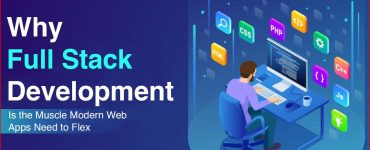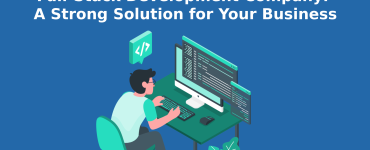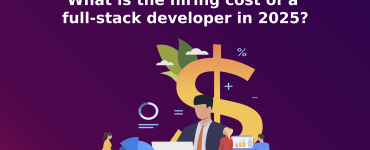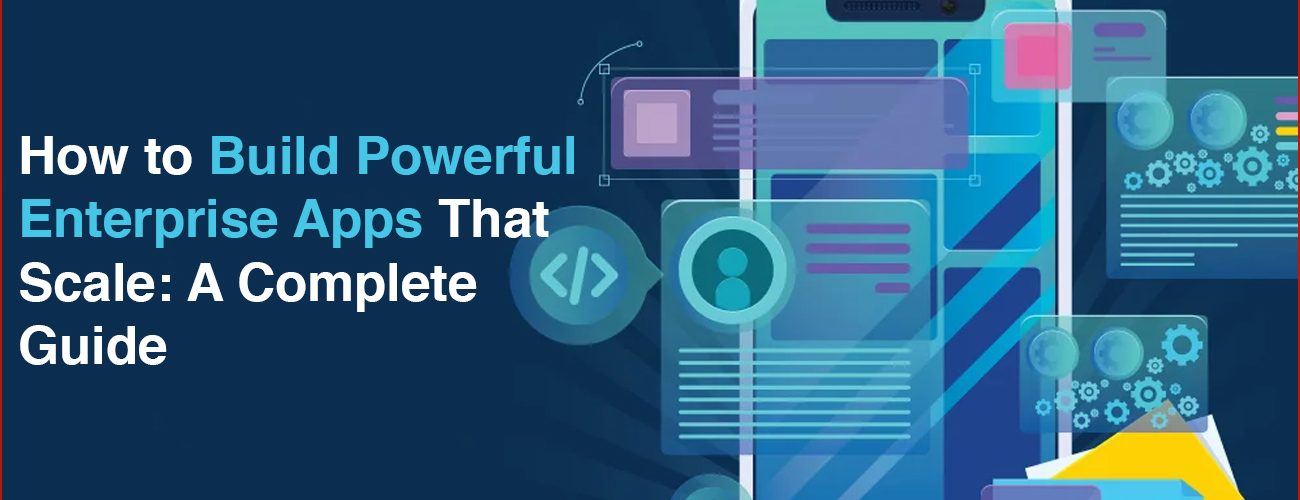
How to Build Powerful Enterprise Apps That Scale: A Complete Guide
Business applications play a critical role in how businesses operate daily. Whether managing customer relationships, tracking inventory, automating business processes, or assisting thousands of employees, these applications are essential for streamlined and efficient business functions.
However, creating business applications is not all about writing code. It’s about grasping business requirements, adapting to in-house processes, selecting suitable technology, and producing software that can change as the business expands.
In this article, we are going to review the complete universe of enterprise mobile application development, including planning, frameworks, mobile applications, and web deployment, sharing examples, statistics, and insights along the way.
What Is Enterprise Application Development?
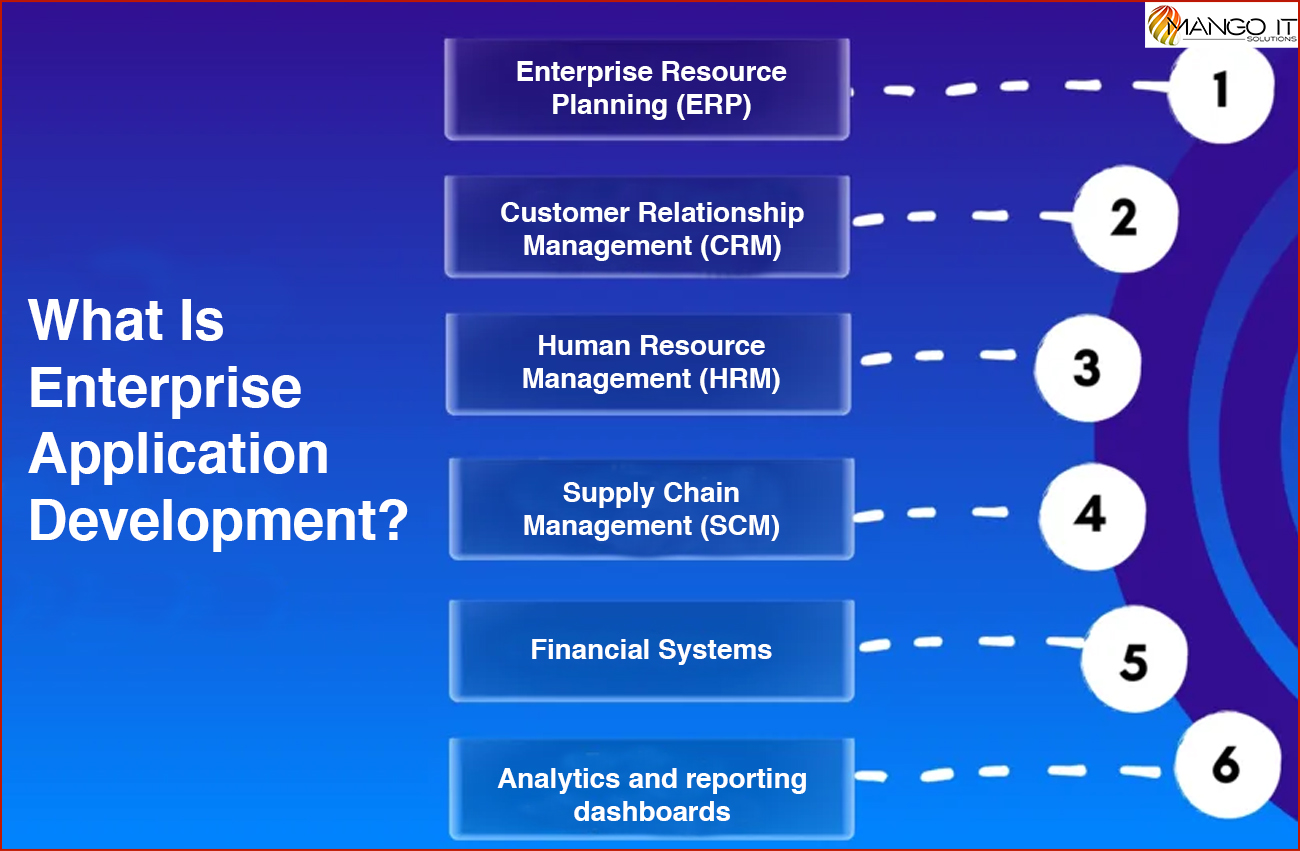

Enterprise application development refers to large-scale software built specifically for a business. These applications are not like traditional apps; they enable complexities of the business’s workflow while being administered in general by a broad number of people in several departments.
Some examples of types of enterprise apps are:
- Enterprise Resource Planning (ERP)
- Customer Relationship Management (CRM)
- Human Resource Management (HRM)
- Supply Chain Management (SCM)
- Financial systems
- Analytics and reporting dashboards
These applications will often connect to other applications and play a key role in keeping a business connected and productive.
Reasons Why Companies Invest in Enterprise Applications
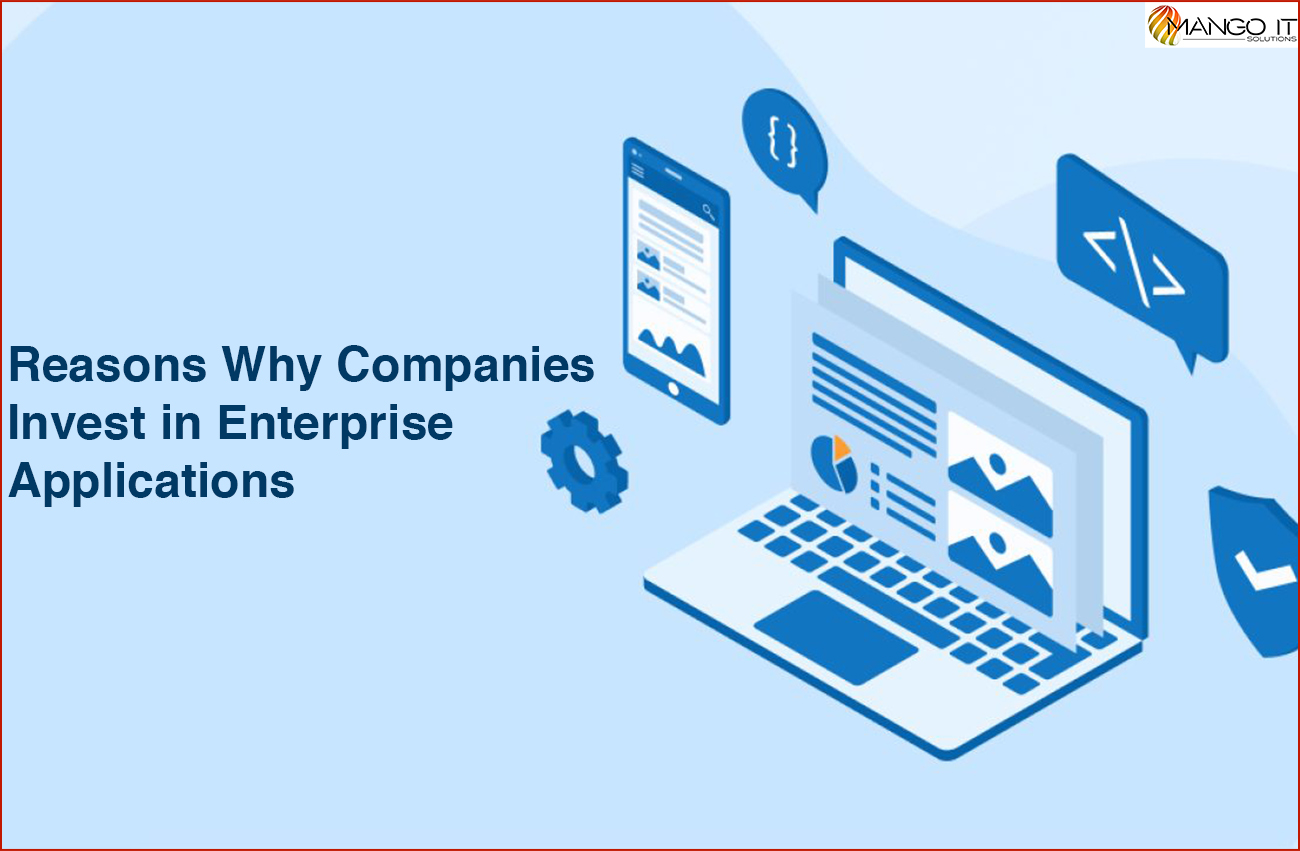

The enterprise software market is projected to surpass $326.3 billion in 2025 (Statista), and you can see why.
Advantages:
- Efficiency: Automate repetitive tasks, decrease errors, and reduce time.
- Consistency: Ensures all teams stay together with access to current data.
- Scalability: Available when your company needs to grow.
- Better Decisions: Offers insights and reporting tools for business decision-making.
- Cost Savings: Saves labor and improves production over the long term.
Common Types of Enterprise Software


Different businesses need different kinds of software. Here are some different categories of software:
- CRM (Customer Relationship Management)
Example: Salesforce
Used for tracking leads, customer data, and improving sales.
- ERP (Enterprise Resource Planning)
Example: SAP
Involves finance, operations, engagement, human resources, and more into one system.
- BI (Business Intelligence)
Example: Power BI
Works with raw data and creates visual dashboards and reports.
- HRM (Human Resource Management)
Example: Workday
Manages employees, recruitment, payroll, and all employee information.
- SCM (Supply chain management)
Example: Oracle SCM
Manages logistics, processing orders, and supplier information.
Must-Have Features for Enterprise Applications


Essential Features for Enterprise Applications
When you create an Enterprise Application, web or mobile, there are some required features:
- User Role Management
- Real-time Data Sync
- ERP/CRM tools integration
- Data security and compliance
- Scalable Backend
- Responsive User Interface across devices
- Analytics and reporting dashboards
- Cloud hosting
All of these features help make sure your app can support the operations of your business quickly and securely.
Development of Enterprise Mobile Applications
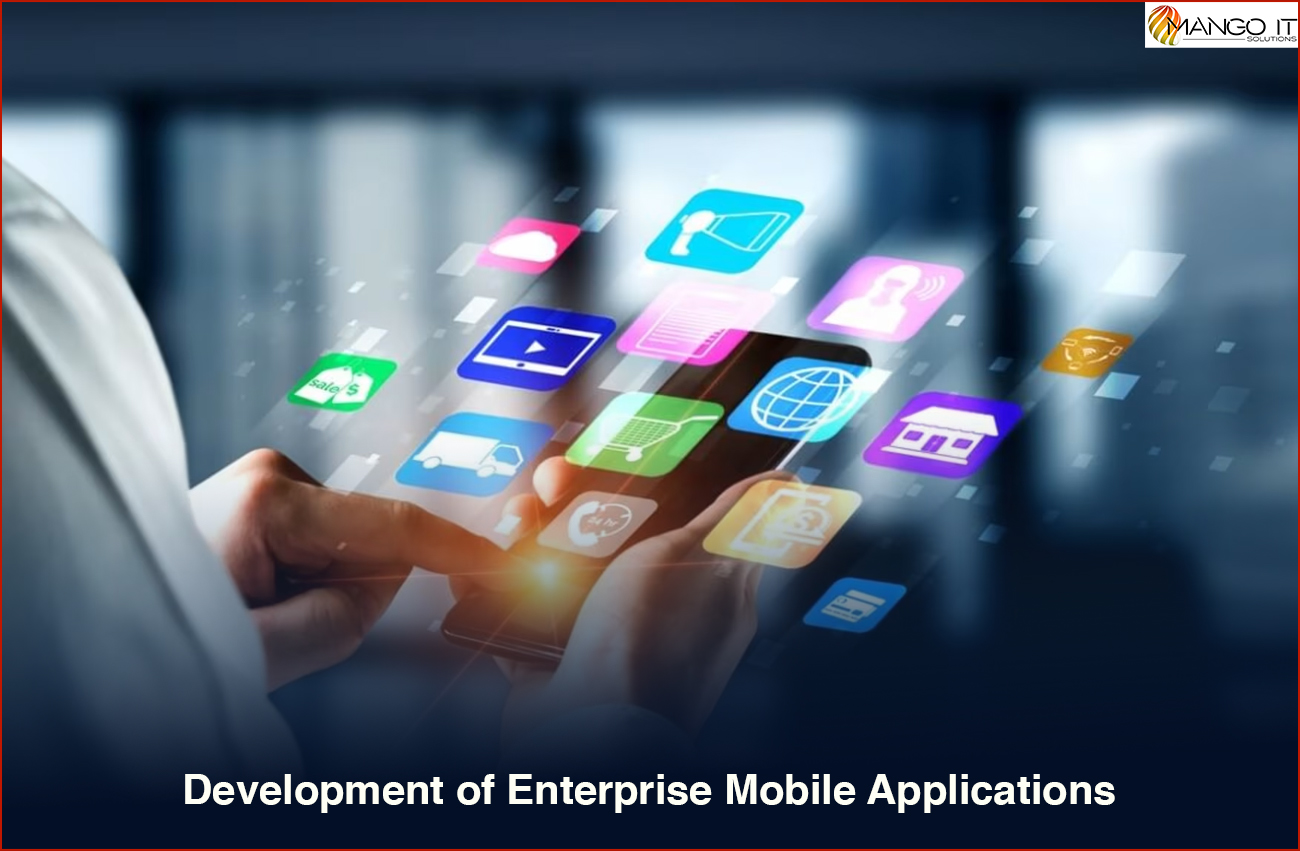

Mobile access is no longer a nice-to-have feature. With 6.9 billion smartphone users globally, (GSMA) businesses must meet users where they are on their phones.
Why Mobile is Important:
- Field Teams Stay Updated: Logistics, sales, and service reps can provide real-time updates on data.
- Speed of Decision-making: Executives can view reports and dashboards from any location.
- BYOD Enabled: Fosters the growing trend of personal devices in the workplace.
Picking an Appropriate Tech Stack
Picking the appropriate technology stack is a vital decision. You want dependable tools, have support available, and are scalable.
React for Enterprise Applications
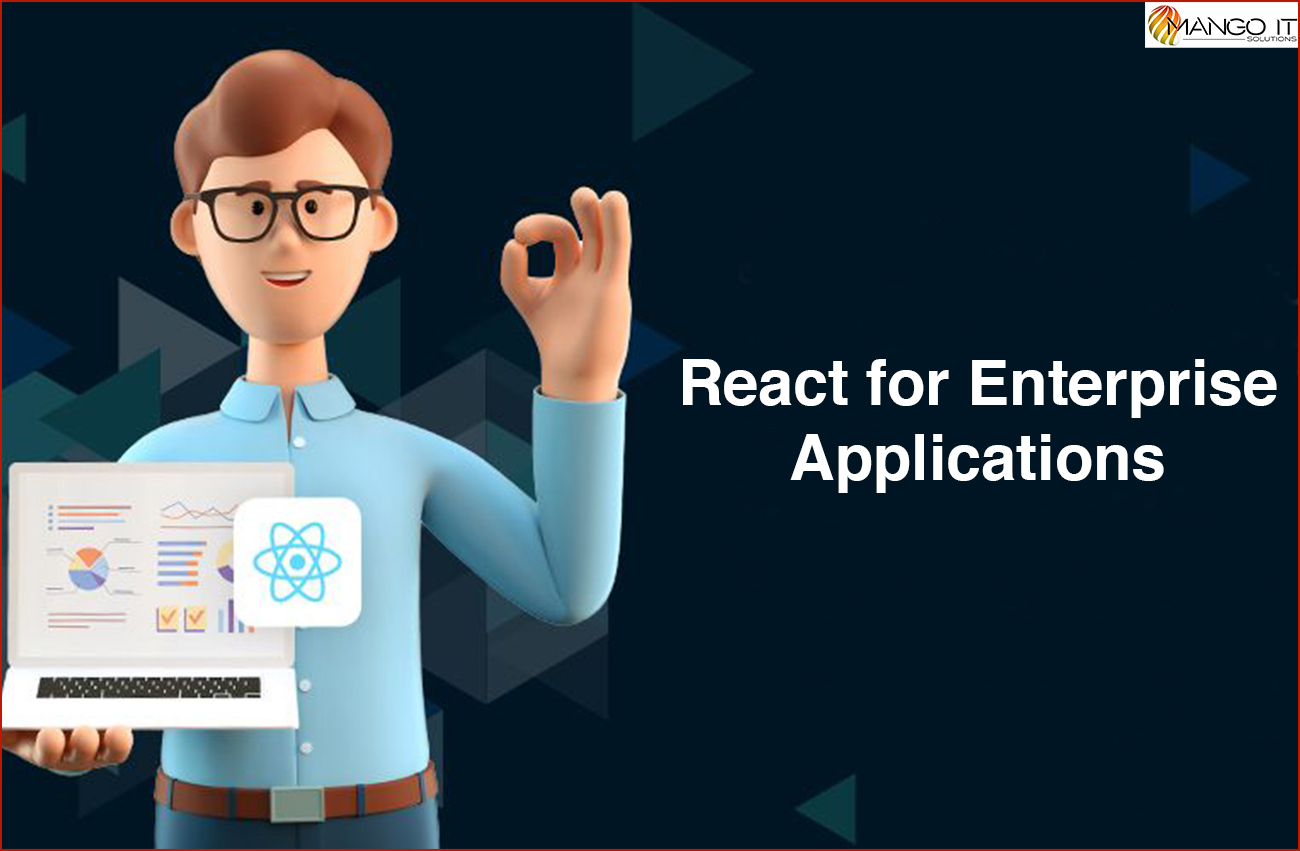

React is an incredibly popular technology developed by Meta for building fast and interactive frontends.
Reasons why React is a good fit for enterprise applications:
- Individual components are reusable, making the development time less
- Works seamlessly and easily with APIs and backend systems
- Large community with many contributors, has regular updates, and supports creating rich user experiences
Additionally, React Native provides a way to develop mobile apps using the same concepts, principles, and framework.
PHP Enterprise Application Development
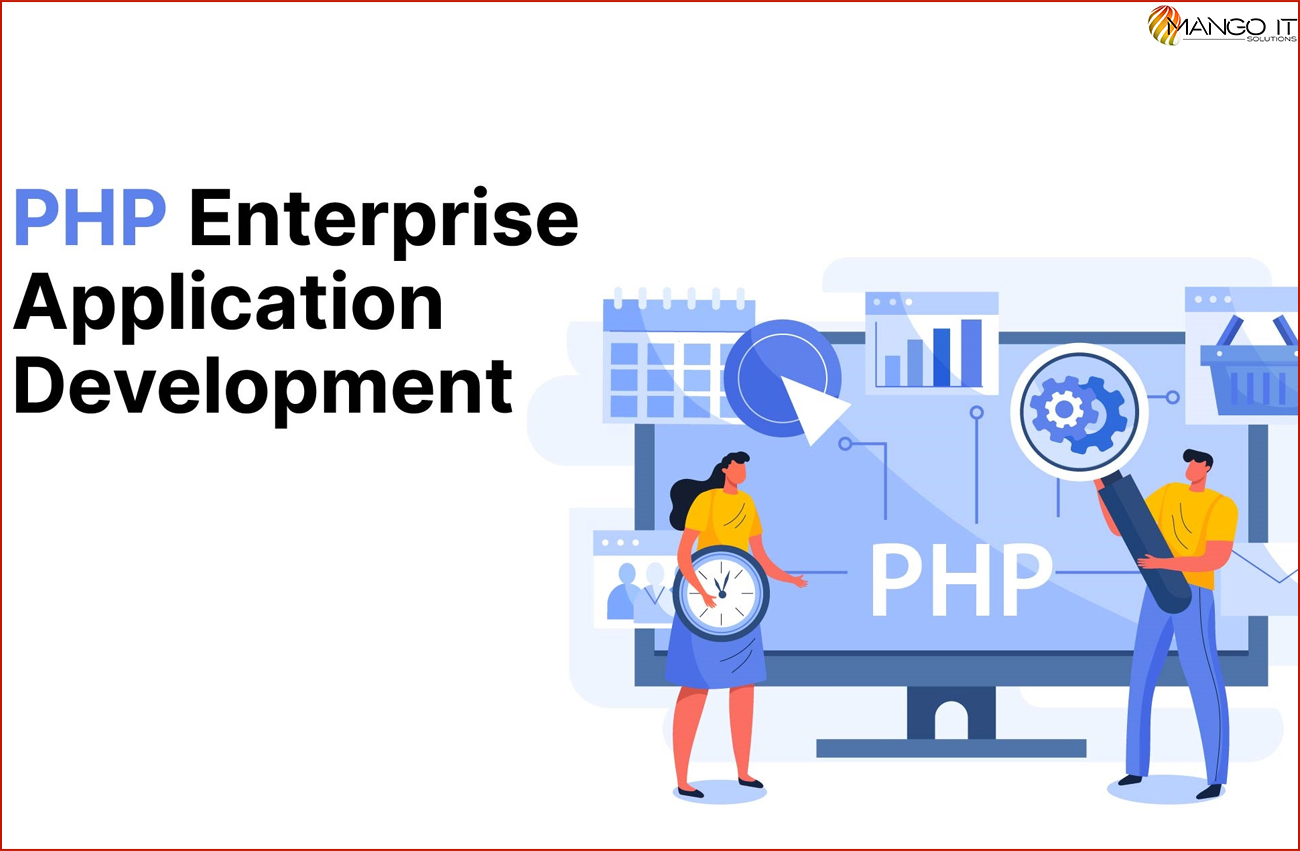

Even though PHP is somewhat of an older sibling in PHP applications development, it is still one of the most used technologies for enterprise backends.
Reasons PHP is still relevant:
- Popular and well-established frameworks, like Laravel and Symfony
- Works well with enterprise CMS platforms, like Drupal
- Scalable, easy to maintain, and reasonably cost-effective for large systems
Best Enterprise Web Application Frameworks
Here are some of the top choices for building enterprise-grade applications:
| Framework | Ideal For | Language |
| Spring Boot | Complex backend systems | Java |
| .NET Core | Secure enterprise web apps | C# |
| Laravel | PHP-based enterprise systems | PHP |
| Django | Data-heavy applications | Python |
| Angular | Web dashboards & portals | TypeScript |
| React | Interactive user interfaces | JavaScript |
Each framework brings different strengths, depending on your goals, internal team skill sets, and project complexity.
Enterprise Web Software Development
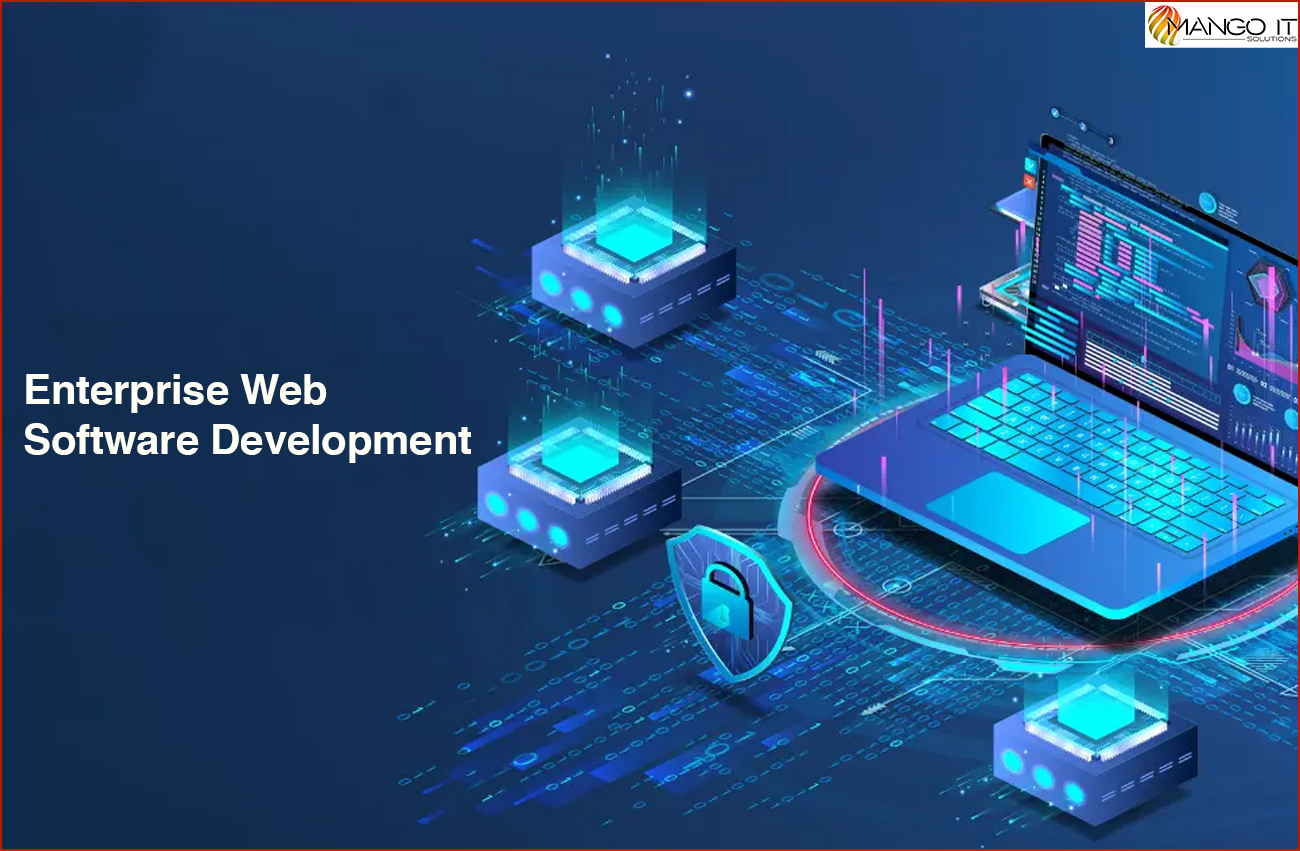

Enterprise web software is primarily for internal use, such as internal processes, reporting tools, management dashboards, or customer support portals.
Three key considerations for enterprise web software development:
- Data: Your application should be able to handle the processing and storage of a large quantity of data without any lag or delay in retrieval.
- Integration: Your application will likely need integration with third parties, such as Salesforce, SAP, and custom APIs, to name a few.
- Security/Compliance: The applications should have end-to-end encryption with multi-factor authentication and will need to be SSO compatible and compliant with standards such as GDPR.
- Performance Scales: Your application should be designed to sustain hundreds of thousands of users without crashing.
How Enterprise Application Development Works (A Step-by-Step View)


Here is a look at what a typical project can look like from planning to launch:
1. Identify Business Needs
- Speak with stakeholders
- Map workflows
- Identify key pain points
2. Architect the Application
- Decide on a monolithic or microservices approach
- Plan for data storage and APIs
- Think about scaling for the future
3. Choose and Use Proper Tools
- Choose the correct framework for an enterprise app that considers performance, budget, and compatibility
4. UI/UX Design
- Lay out the design, flows
- Build wireframes, prototypes for testing
5. Develop User Interface and Integrate
- Build the front-end and back-end
- Integrate with existing software
6. Testing
- Run unit tests, stress tests, and UAT (User Acceptance Tests)
7. Deploy Application
- Set up CI/CD pipelines
- Deploy to cloud or secure environment
8. Monitor and Maintain
- Keep software up to date (Patches, Updates, etc.)
- Monitor the application for usage and application health
Typical issues and how to approach them
Enterprise app development can become convoluted if you don’t plan accordingly. Here are some typical challenges:
- Legacy Systems: Connecting older tools to newer applications can be difficult.
- Security: Enterprise apps are targeted by cyberattacks.
- Changing Requirements: Business needs may change mid-project.
- Adoption: Engaging users is tough if they don’t use the tools you build for them, since they have never learned the tools, so they don’t even know how to use them, even when they can.
The best way to navigate these issues is to work with a partner that has extensive knowledge of enterprise systems as they relate to your specific development and builds with flexibility in mind.
What’s Changing in Enterprise Development?
The enterprise software landscape is changing rapidly. Here are some trends (and future-focused concepts) to note:
AI + Automation
AI-powered tools are helping organizations automate tasks, anticipate trends and situations, and improve customer service functions.
Low-Code Platforms
Software like OutSystems and Microsoft Power Apps is accelerating development by allowing users to drag and drop components to create apps themselves—making it easier for companies that outsource web development to speed up delivery.
Cloud-Native Development
Apps that are designed to exist in a cloud environment are easier to scale, update, and manage throughout their lifecycle and can be designed as an ecosystem.
Progressive Web Apps
PWAs act like mobile apps, but are accessible like a website; ideal for organizations with remote teams or field operations.
Let’s Create a Solution that Works for You
Need to develop a robust mobile or web app that suits your business needs?
Contact Mango IT Solutions for a complimentary consultation!
We’ll work together to align your business needs to a digital solution, choose the enterprise web application framework that works for you, and develop a system that will enable your growth today and in the future.

